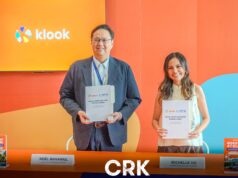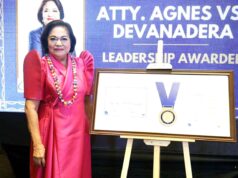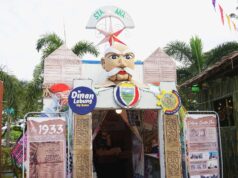CANDABA, Pampanga – Central Luzon and Southern Tagalog provinces as well as the City of Manila and Cebu province have become the “hotspots” for the sale and distribution of counterfeit drugs brought into the country, the chair of the Philippine Medical Association said during a health summit organized here by Sen. Pia Cayetano.
Aurora, Bataan, Bulacan, Nueva Ecija, Pampanga, Tarlac and Zambales in Central Luzon and Cavite, Laguna, Batangas, Rizal an Quezon in Calabarzon figured out in the list of areas being monitored because these were where government agencies had actually seized fake medicines, according to Dr. Minerva Calimag, PMA chair.
In an interview, Calimag declined to tell the volume or amount of fake drugs that enter the Philippines yearly, saying law enforcement agencies continue to do intelligence-gathering and prosecution work.
Calimag said China, India and Pakistan have shown to be the sources of counterfeit drugs in the Philippines.
Melinda Hilario, food and drug regulation officer of the Bureau of Food and Drugs Administration in Central Luzon, said other drugs are brought in by biajeras (Filipino traders) from Bangkok. Some are manufactured locally, Hilario added.
Calimag said most of the medicines that are being counterfeited are those crucial for life-saving. Among these are Lasix (for cardo-vascular diseases), Plendil (for thinning the blood), Sensorcaine (a local anesthetic) and Mesofenam (an antibiotic).
According to her, “drugs not labeled in English have higher risk because [users] cannot understand what the label says about its ingredients and medical purpose.”
In the Philippines, efforts to combat the flood of counterfeit medicines began in 2004 through the Samahan Laban sa Pekeng Gamot (SLPG). In 2008, the BFAD intensified a similar campaign.
Calimag said the purchase and use of bogus medicines not only waste the resources of sick persons and their families but more importantly, fail to treat the illness, cause direct harm on the sick person through complications or drug resistance.
For instance, multiple drug-resistant cases have surfaced in 2008 including that against the XDR-tuberculosis strain found recently in 49 countries, she said.
A survey done by the World Health Organization from 1992 to 1994 showed that 51 percent of counterfeit drugs contained no active ingredients and some even contained poison.
Calimag said counterfeit drugs proliferate because of weak drug regulation, control and enforcement; lack of supplies and unregulated markets.
Virginia Timbol, food and drugs regulation officer of BFAD in Central Luzon, said buyers can avoid the purchase of fake medicines by checking if the stock has a drug registration number in its box. It will also be helpful if buyer sales get their stocks only from licensed drug outlets. The licenses must be displayed in the establishments, she said.
The manufacture, distribution and sale of counterfeit medicines is a crime punishable under Republic Act 8203.
Aside from engaging the members of the SLPG in monitoring the sale of fake medicines, Cayetano said the Cheaper Medicines Act (Republic Act 9502) which she co-authored and the upcoming law that strengthens the BFAD seek to provide affordable and quality medicines for Filipinos.
Aurora, Bataan, Bulacan, Nueva Ecija, Pampanga, Tarlac and Zambales in Central Luzon and Cavite, Laguna, Batangas, Rizal an Quezon in Calabarzon figured out in the list of areas being monitored because these were where government agencies had actually seized fake medicines, according to Dr. Minerva Calimag, PMA chair.
In an interview, Calimag declined to tell the volume or amount of fake drugs that enter the Philippines yearly, saying law enforcement agencies continue to do intelligence-gathering and prosecution work.
Calimag said China, India and Pakistan have shown to be the sources of counterfeit drugs in the Philippines.
Melinda Hilario, food and drug regulation officer of the Bureau of Food and Drugs Administration in Central Luzon, said other drugs are brought in by biajeras (Filipino traders) from Bangkok. Some are manufactured locally, Hilario added.
Calimag said most of the medicines that are being counterfeited are those crucial for life-saving. Among these are Lasix (for cardo-vascular diseases), Plendil (for thinning the blood), Sensorcaine (a local anesthetic) and Mesofenam (an antibiotic).
According to her, “drugs not labeled in English have higher risk because [users] cannot understand what the label says about its ingredients and medical purpose.”
In the Philippines, efforts to combat the flood of counterfeit medicines began in 2004 through the Samahan Laban sa Pekeng Gamot (SLPG). In 2008, the BFAD intensified a similar campaign.
Calimag said the purchase and use of bogus medicines not only waste the resources of sick persons and their families but more importantly, fail to treat the illness, cause direct harm on the sick person through complications or drug resistance.
For instance, multiple drug-resistant cases have surfaced in 2008 including that against the XDR-tuberculosis strain found recently in 49 countries, she said.
A survey done by the World Health Organization from 1992 to 1994 showed that 51 percent of counterfeit drugs contained no active ingredients and some even contained poison.
Calimag said counterfeit drugs proliferate because of weak drug regulation, control and enforcement; lack of supplies and unregulated markets.
Virginia Timbol, food and drugs regulation officer of BFAD in Central Luzon, said buyers can avoid the purchase of fake medicines by checking if the stock has a drug registration number in its box. It will also be helpful if buyer sales get their stocks only from licensed drug outlets. The licenses must be displayed in the establishments, she said.
The manufacture, distribution and sale of counterfeit medicines is a crime punishable under Republic Act 8203.
Aside from engaging the members of the SLPG in monitoring the sale of fake medicines, Cayetano said the Cheaper Medicines Act (Republic Act 9502) which she co-authored and the upcoming law that strengthens the BFAD seek to provide affordable and quality medicines for Filipinos.




